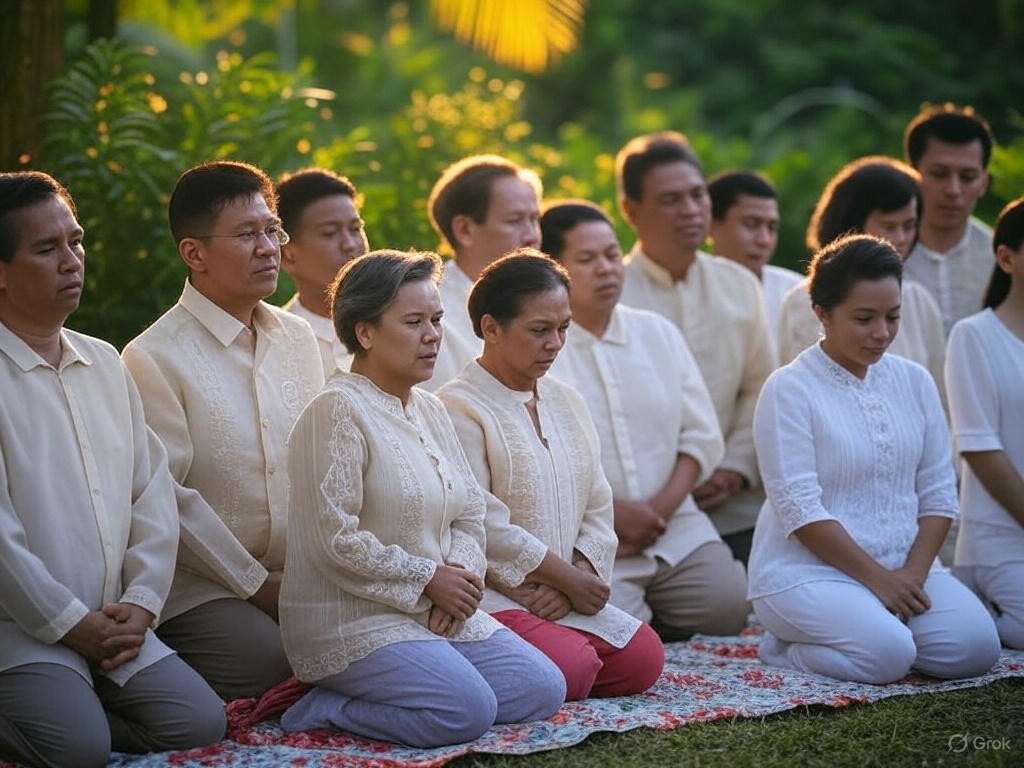
This article assumes the “Acceptance Prayer” aligns with something like the Serenity Prayer in Tagalog.
The Acceptance Prayer in Tagalog: Embracing Peace and Surrender
In the Philippines, a country where faith permeates daily life, prayers serve as a source of strength, guidance, and solace. Among the many prayers cherished by Filipinos, those centered on acceptance hold a special place, reflecting the resilience and spirituality of a people accustomed to life’s challenges. While there isn’t a single, universally recognized “Acceptance Prayer” in Tagalog, the concept of acceptance is often embodied in translations or adaptations of prayers like the Serenity Prayer, originally penned by theologian Reinhold Niebuhr. In Tagalog, such prayers resonate deeply, blending Christian values with the Filipino spirit of pagTanggap (acceptance).
The Serenity Prayer as a Foundation
The Serenity Prayer, widely known in English as “God, grant me the serenity to accept the things I cannot change, courage to change the things I can, and wisdom to know the difference,” has been adapted into Tagalog to reflect the theme of acceptance. This prayer, popularized globally through Alcoholics Anonymous and other support groups, aligns with the Filipino ethos of surrendering to God’s will while striving for personal growth. Its Tagalog version is often used in religious gatherings, personal devotions, and even counseling settings.
Here’s a common Tagalog rendition of the Serenity Prayer, which could be considered an “Acceptance Prayer”:
Diyos ko, bigyan Mo ako ng katahimikan
Upang tanggapin ang mga bagay na hindi ko mabago,
Lakas upang baguhin ang mga bagay na kaya ko,
At karunungan upang malaman ang pagkakaiba.
Hayaan Mo akong mamuhay nang paisa-isa,
Tinanggap ang mga paghihirap bilang daan tungo sa kapayapaan,
At sa Iyong gabay, matutong tanggapin ang mundong ito
Tulad ng ginawa ng Iyong Anak, si Hesukristo.
Amen.
This version expands on the original, incorporating a distinctly Filipino tone of humility and reliance on divine guidance.
Meaning and Themes
The “Acceptance Prayer” in Tagalog encapsulates three core petitions:
Katahimikan (Serenity): A plea for inner peace to accept unchangeable circumstances—be it loss, hardship, or fate.
Lakas (Courage): A request for strength to act where change is possible, reflecting the Filipino value of tapang (bravery) in adversity.
Karunungan (Wisdom): A call for discernment, echoing the cultural emphasis on dunong (understanding) to navigate life’s complexities.
The additional lines about living day by day and accepting hardships as a path to peace tie into the Filipino experience of endurance, often expressed in the phrase bahala na—a mix of trust in God and acceptance of what comes. The reference to Jesus Christ grounds the prayer in Christian theology, a cornerstone of Filipino spirituality.
Cultural Resonance
For Filipinos, acceptance is not passive resignation but an active embrace of life’s realities, rooted in faith. The Tagalog “Acceptance Prayer” mirrors this mindset. Whether recited during a typhoon’s aftermath, a family crisis, or personal struggle, it offers a framework for finding peace amid chaos. The use of Tagalog makes it intimate and relatable, allowing Filipinos to connect with God in their native tongue.
This prayer also reflects the communal nature of Filipino culture. While it’s personal in tone, it’s often shared in group settings—family prayers, church services, or support circles—reinforcing the idea that acceptance is a collective journey supported by faith and kinship.
A Prayer for Modern Times
In today’s fast-paced world, the “Acceptance Prayer” in Tagalog has found renewed relevance. It’s a balm for those grappling with uncertainty, from economic pressures to global pandemics. Filipino counselors and spiritual leaders often recommend it to individuals seeking emotional healing, as it balances surrender with empowerment. In some communities, it’s even set to music, its soothing cadence enhancing its meditative quality.
Unlike formal liturgical prayers like the “Ama Namin,” the Tagalog Acceptance Prayer is flexible, with variations depending on the speaker or context. Some might shorten it to its core lines, while others embellish it with personal supplications, making it a living expression of faith.
The “Acceptance Prayer” in Tagalog, exemplified by adaptations like the Serenity Prayer, is a powerful testament to the Filipino soul—resilient, faithful, and hopeful. It teaches that acceptance is not defeat but a courageous act of trust in God’s plan. As Filipinos face life’s trials with heads bowed in prayer and hearts lifted in hope, this prayer remains a quiet yet profound companion, guiding them toward peace in a turbulent world.